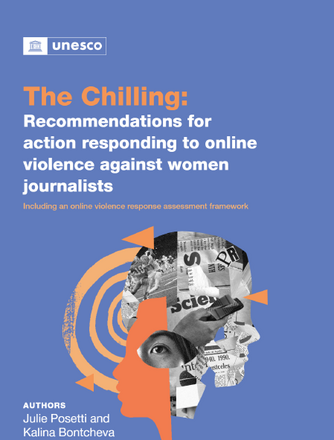
The first set of recommendations in the report is addressed to multiple stakeholders. It includes the invite to facilitate coordinated multi-stakeholder cooperation and exchange of good practices; to recognise the intersectional threats associated with gendered online violence, such as racism, religious bigotry, sectarianism, antisemitism, homophobia and transphobia, and respond accordingly - including through policy development and training; to encourage the development of more effective responses aligned with international human rights standards.
The report then addresses the single actors involved in the protection of women journalists attacked online with specific lists of actions that they should undertake.
News organisations should, among other, recognise gendered online violence as a workplace safety issue; ensure that protection strategies integrate physical, digital and psychological support; provide training and develop newsroom protocols sensitive to intersectional threats and that cover both staff and freelancers.
Internet companies should implement an effective human-in-the-loop approach to content moderation; establish transparent community rules and cease making exceptions for influencers, public figures and high-profile actors.
States should ensure an equal application of laws and regulation offline and online; introduce guidelines to restrain elected representatives and officials who engage in gendered violence against women journalists; make social media companies more accountable; fund pro bono legal services equipped to deal with gendered online violence.
Political parties and actors should develop policies requiring party members to avoid instigating or facilitating attacks against women journalists and sanction members who take part in acts of online violence.
Law enforcement agencies and judicial actors should acknowledge the connection between online and offline harm; participate in programmes to improve their media and information literacy regarding digital freedom of expression and encourage training.
Civil society organisations should strengthen their call for effective responses to online abuse and their partnerships with journalists, news organisations and researchers.
Lastly, intergovernmental organisations should develop and provide gender-sensitive training and education for lawmakers and the judiciary to enable them to deal more appropriately with online violence and monitor the implementation of States’ responses to online violence against women journalists.
The report ends with a 25-steps guide for responses to online violence against women journalists at the legislative, legal and policy level.
Tags: Media and gender Digital safety Harassment Safety of journalistsThe content of this article can be used according to the terms of Creative Commons: Attribution-NonCommercial 4.0 International (CC BY-NC 4.0) . To do so use the the wording "this article was originally published on the Resource Centre on Media Freedom in Europe" including a direct active link to the original article page.

